It may seem that eggplants are more resistant to disease compared to other crops. This is, in a way, because they do not occupy such an important place as potatoes, tomatoes or peppers. In fact, the crop gets sick no less often than other plants. If treatment of eggplant diseases is not started in a timely manner, the harvest can be lost completely.
| Content: Eggplant diseases and methods of treating them
|
Main diseases of eggplant
Late blight
This is the main disease of eggplants both in greenhouses and in open ground. It is most widespread in the southern regions after heavy rains. In the middle zone and further north, the crop is grown only in greenhouses and the disease practically does not manifest itself. Although, with joint growing with tomatoes, if they get sick, then the eggplants will get sick.
|
In the south, greenhouse eggplants are more often affected by late blight. |
In open ground, it is mainly late varieties that are affected, since at the end of summer favorable conditions arise for the development of the pathogen: the day is still warm, but the nights are already cool and cold dew falls.
Description of the disease
Pathogen - a pathogenic fungus that persists in the soil, on plant debris, tubers and seeds. The source of the primary infection is a diseased potato or tomato.
Favorable conditions. The disease spreads widely on eggplants at high air humidity (more than 80%) and an average daily temperature below 20°C, dropping to 10°C at night. In the south it can appear during prolonged heavy rains and relatively high temperatures (southern late blight).
Further development depends on the weather. With rising temperatures (especially at night) and decreasing humidity, the disease is not so harmful. Spores are carried by wind, irrigation water, clothing and work tools.
Signs of defeat. Stems, leaves and fruits are affected.The disease begins with eggplant leaves, where brown-brown spots without clear boundaries first appear along the edges, gradually spreading across the leaf plate. At the same time, black-brown spots appear over the entire leaf surface.
|
At high humidity, a whitish coating of sporulation is noticeable on the underside of the leaves. The disease quickly spreads throughout the plant. Affected leaves dry out. |
Brown streaks appear on the stems, which over time grow both in length and in circumference, ringing the stem. Diseased tissue is hard and slightly shiny. General wilting occurs and the plant dies.
Fruits can become infected at any stage of growth. Gray-brown dry spots appear on them; with high humidity, a white coating appears on the spots. With a long course of the disease, the fruits become deformed and dry out. When storing eggplants affected by late blight much less than tomatoes.
How to treat the disease
Control measures can weaken the course of the disease on eggplants, but not cure it. If late blight has appeared, it will not recede, although treatments can protect neighboring plants from the disease for a while.
Treatment started at the very beginning of the disease has the greatest effect. Potatoes, tomatoes and peppers are treated simultaneously with diseased eggplants.
- Water the eggplants with Previkur. Potatoes that occupy a large area are sprayed with a solution of the same drug.
- At the same time as Previkur, eggplants are sprayed with Consento to prevent the disease, since the plants may already be infected. The frequency of treatments in the greenhouse is 3-4 times per season with an interval of 10 days, outdoors 5-6 times.In the central region, potatoes, where the infection usually begins, are sprayed 6-8 times per season.
- Treatment with any copper-containing preparations, except those containing copper sulfate. This substance is ineffective against late blight.
- In emergency cases, treat the bushes with calcium chloride. But this drug is quite toxic to eggplants and treatment with it is possible if all other means are ineffective. 1 liter of 10% solution (sold in pharmacies) is diluted in 10 liters of water. It can also be sprayed on other nightshades.
The pathogen very quickly becomes resistant to fungicides, so they are changed every time. Do not spray eggplants twice in a row with the same pesticide.
|
Eggplant affected by late blight |
Disease prevention
It is more effective on eggplants than on tomatoes and potatoes. If carried out correctly, the crop can remain healthy until the end of the season.
- Spraying bushes with Trichoderma. You can also water your plants with its solution - this will at the same time be a good prevention of root rot. Trichoderma is an antagonist fungus of many pathogenic fungi. It completely suppresses many pathogens, and significantly slows down the development of some. 30 g of biomass is diluted in 10 liters of water, always adding 1 liter of fat milk or wallpaper glue (these substances are a nutrient medium for the fungus). Eggplants are thoroughly sprayed. When Trichoderma takes root, white spots of the fungus will appear on the leaves. The greatest efficiency is achieved in a greenhouse, where conditions are more favorable. Outdoors in cool weather (below 16°C), the fungus either does not take root or dies from the cold. After treating eggplants with Trichoderma, the crop is not treated with pesticides, since they will destroy the beneficial microflora.
- Use of the immunoprotector Immunocytitis. The drug increases the immunity of plants and their resistance to fungal and bacterial infections.
- In the fall, all remains are removed and burned, and not only eggplant, but also tomatoes and potatoes, as well as peppers if they were sick.
The Astracom variety is resistant to the disease, therefore, if late blight rages on nightshades every year, then it is chosen.
Folk remedies. In hot summers, eggplants are sprayed with a pink solution of potassium permanganate. Sometimes they are treated with an iodine solution with the addition of fat milk 1 l/10 l of water.
White rot (sclerotinia)
The disease often occurs indoors in northern regions. While on tomatoes and peppers it is not so dangerous, on eggplants sclerotinia becomes persistent and the disease is not easy to cure.
|
The disease appears 2-4 weeks after planting the seedlings and progresses until the end of the growing season. If it spreads strongly, it can destroy the plot. |
Description of the disease
Pathogen - sclerotinia mushroom. Lives in the soil, persists on plant debris. In the northern regions, the harmfulness is 50-60%. The further south you go, the less harmful it is.
Terms of distribution. It spreads with soil particles on working tools, with irrigation water, and when caring for plants. Favorable conditions are high humidity and low temperature, as well as fluctuations of more than 10-12 ° C between day and night temperatures.
Signs of defeat. Affects flowers, stalks, and fruits. With strong spread, it may appear on the petioles of leaves and the lower part of the stem.
The disease on eggplants begins from the upper ovaries.The stalks soften and become slimy, and a white fluffy coating similar to cotton wool appears on them. Gradually, the disease spreads to the calyx and apex of the fetus. They soften and become slimy, the ovaries fall off. If measures are insufficient, the disease moves down, affecting the lower fruits.
At the same time, the top begins to fade, the leaves lose turgor and droop. Over time they dry out.
When the plant is severely affected, a white coating also appears on the stem below, the stem softens and the eggplant dies.
|
White rot can occur during storage of eggplants, although it does not occur as often as on tomatoes. The calyx and the top of the fruit next to it soften and become watery. A white coating of fungus appears on the softened part. |
Treatment of white rot on eggplants
Removing the affected fruits does not have much effect, since the disease is very persistent, and lesions appear again and again.
You can treat this disease on eggplants as follows:
- Drug Switch. Spray during the growing season with an interval of 10-14 days. If there was white rot in the greenhouse last year, then 14 days after planting the seedlings, the plants are sprayed for prevention.
- To treat eggplant diseases, the biological product Baxis is used. The bacteria it contains effectively suppresses the growth of pathogenic fungi, including white rot. Treatments are carried out 2-3 times per season when the first signs of the disease appear.
- For preventive and therapeutic purposes, eggplants are sprayed with Trichoderma.
- Regular ventilation of greenhouses
- Removing diseased parts of the plant. The sections are treated with Trichoderma or Pseudobacterin.
At the same time as diseased eggplants, peppers and tomatoes are also treated if they grow in the same greenhouse.
Disease prevention
- When forming bushes, the lower leaves should not be torn off after watering. The earth should dry out.
- Daily ventilation of greenhouses. If the nights are not very cold (above 14-15°C), then the windows are left open at night. Varieties intended for cultivation in northern regions tolerate such temperatures well, especially since in a greenhouse the readings are always 3-5°C higher.
- In the fall, greenhouses are disinfected.
Folk remedies very effective for disease prevention.
Before planting seedlings, the soil is spilled with boiling water. During the growing season, for preventive purposes, eggplants are watered with a pink solution of potassium permanganate 2 times a month.
Bushes can be sprayed with iodine solution.
Verticillium wilt
The disease affects all nightshade crops; in addition, the disease progresses on cultivated plants of other families and even berry bushes. The disease is very dangerous and difficult to eradicate.
Description of the disease
Pathogen - a pathogenic fungus that accumulates in the soil. Preserves on plant debris, soil, damaged seeds or potato tubers. It affects the vascular system of plants, spreading with a current of liquid into all tissues.
The mycelium of the fungus appears only at very high soil and air humidity. The pathogen penetrates the vascular system through damaged small roots. The incubation period is 8-20 days, at high temperatures up to 40 days. The pathogen persists in the soil for 10-13 years.
Terms of distribution. Favorable factors are high soil and air humidity, temperature not higher than 25°C. Lack of crop rotation or rotation of only nightshade crops increases the risk of developing the disease.
Signs of defeat. Verticillium is easily distinguished from both wilt caused by root rot and wilt caused by lack of water. On eggplants, the disease begins with the lower old leaves. During the daytime they droop, although the leaves of the middle and upper tiers remain elastic.
During the night, the plants restore the turgor of the lower leaves. As the disease develops, the lower leaves on eggplants do not recover overnight and remain withered; the leaves of the middle tier begin to droop during the day.
|
The lower old leaves gradually turn yellow, the edges become reddish-brown (the edge of the leaf itself does not dry out), and the leaf blade itself acquires a gray-green color, like that of young leaves. The entire plant gradually withers and dies. |
On a cross section of any part of the stem, browned vessels are clearly visible. This sign reliably identifies the disease, since with fusarium, browning appears at a distance of no higher than 20-30 cm from the root collar.
Control measures
The disease is almost impossible to cure. All drugs only slow down the development of the disease on eggplants, but do not destroy it.
However, if the pathogen is recognized at an early stage, it is possible with the help of chemicals. drugs to slow down the course of the disease so much that you can get a harvest.
- At the earliest stage of the disease, eggplants treated with biological products Pseudobacterin or Trichoderma. They are antagonists of pathogenic soil fungi and prevent their development. Watering is carried out every 3-5 days, after adding 0.5 cups of fat milk to the solution (at the initial stage it is a breeding ground for microorganisms).
- Using the drug Maxim summer resident. Water at the root every 5-7 days.If there is a small amount of fungal spores in the soil, then the symptoms may completely stop.
The pathogen does not like high soil and air temperatures. At a temperature of +25°C its development slows down greatly. Therefore, when growing eggplants in a greenhouse, it is possible to ventilate the greenhouse more rarely to increase the temperature inside. At the same time, humidity should also not exceed 60%.
Prevention
- Soil liming reduces pathogen activity, but does not completely eliminate disease outbreaks.
- In autumn, the plot is watered with a 5% solution of iron sulfate, which reduces the intensity of the disease.
|
Crop rotation will not help, since verticillium affects almost all garden crops. It remains only for 10-13 years to make a lawn where the outbreak of the disease was. |
The Nizhnevolzhsky variety is resistant to verticillium.
Fusarium wilt
More common in the south than in the north. Greenhouse eggplants suffer from fusarium blight more than ground eggplants. The disease affects all nightshade crops growing in the garden: eggplant, peppers, tomatoes, potatoes.
Pathogen - a pathogenic fungus that persists in the soil, on plant debris, and greenhouse structures. It affects the conductive vessels of the root collar and stem. Penetrates into plants through the ends of thin lateral roots when they are damaged. The mycelium enters the stem, petioles, and fruits through vessels. When the plant is completely damaged, it penetrates into the seeds.
Terms of distribution. The disease progresses with sudden changes in temperature between day and night, strong fluctuations in soil moisture, an increase in soil temperature to 28°C, and with severe shading of plants.
Signs of defeat. The pathogen affects the vascular system.The leaves, despite feeding, become pale green with a yellowish tint and slightly wither at the top. The veins gradually lighten, the petioles become deformed, and the leaves curl.
|
A pink coating appears in the root collar area. On a longitudinal section of the stem, at a height of no more than 10-15 cm from the ground, a browned ring of conducting vessels is clearly visible. After 1-2 days, a pinkish mycelium of the pathogen appears on the cut. |
In its vital activity, the fungus releases toxins that weaken the water-holding capacity of cells, which leads to dehydration, first of individual tissues, and then of the entire plant. In the early stages, only the crown withers, and its turgor is not restored, despite watering.
As the disease progresses, the upper, middle, and then lower leaves begin to fade. The plant dies. When you try to pull the stem out of the ground, it comes out easily.
How to treat eggplants against disease
There are no drugs that can cure eggplants (and other crops) from fusarium. When using chemicals, the disease can be stopped for some time, but then the disease resumes.
- At the very early stages of the development of the disease, Tiovit Jet helps well. But its effect appears only at temperatures above 20°C. If the nights are cold, it should not be used. The working solution is poured under the root. In open ground during heavy torrential rains, re-application is possible after 7 days. However, if the soil is not sufficiently wet and it is dry at the root depth, then re-watering is not carried out.
- At the earliest stages, the disease can be treated with Previkur Energy. Water at the root with an interval of 5-7 days.
- If the disease progresses, the diseased bushes are removed, the rest are watered with a solution of Pseudobacterin.
It is very difficult to cure fusarium, especially in a greenhouse where there is virtually no crop rotation. Therefore, after harvesting, the soil in the greenhouse is thoroughly poured with boiling water 2 times. The fungus cannot withstand high temperatures and dies.
Prevention
- Prevention consists of uniform watering of eggplants, since the disease most often appears where the plants are not watered at first and then immediately given a large volume of water, actually flooding them.
- With proper application of fertilizers, especially potassium-phosphorus fertilizers, eggplants are more resistant to disease.
- Before sowing, the seeds must be treated.
The varieties Albatross and Nizhnevolzhsky are relatively resistant to fusarium.
Fruit blossom end rot
This disease is much less common on eggplants than on tomatoes and peppers. Since the crop consumes less calcium, potassium and phosphorus than other nightshades, this disease is not as common.
Signs of defeat. On the fruit, a greenish or grayish watery spot usually appears on the side, which over time grows in circles and dries out. The fruit shrinks and becomes unsuitable for food.
|
White-fruited fruits have brown or grayish-white stripes, usually on the side. |
Causes. The reason is the lack of phosphorus-potassium fertilizers against the background of low calcium content in the soil and insufficient watering.
Treatment of the disease
Apical rot eggplant cures well. Since the cause is a lack of macro- and microelements, their addition quickly eliminates the problem.
The crop is watered or sprayed with potassium nitrate.Since eggplants do not consume a lot of calcium, at the same time as spraying with potassium nitrate, water with calcium nitrate, taking half the amount of the drug intended for feeding tomatoes.
Eggplants are fed with microfertilizer, which contains potassium and calcium. Plants respond well to the addition of potassium monophosphate.
Excellent results are obtained by applying an infusion of ash at the root while simultaneously spraying the tops with the same infusion.
Feed eggplants until the symptoms of the disease disappear. After this, special fertilizing is not carried out, since excess fertilizer harms the plants, and, moreover, eggplants most of all need nitrogen.
Anthracnose
Greenhouse eggplants are very sick; outdoors the disease is rare. Affects roots, fruits and leaves. Widely distributed in the south. In temperate climates it does not appear so often.
Pathogen - a pathogenic fungus that persists in the soil, on plant debris, and seeds. Spreads by irrigation water, wind, insects
Favorable conditions are damp and cool weather. In greenhouses it spreads strongly with excessive watering. In greenhouse conditions, the pathogen persists for 2-3 years.
Signs of defeat. The roots become covered with brown spots and gradually ulcerate. Eggplant leaves begin to wilt during the daytime, restoring turgor at night.
|
Yellowish spots of irregular shape appear on the leaves, gradually growing, they merge and dry out. The leaf crumbles. With severe waterlogging, orange pads appear on the spots - fungus sporulation. |
Large brown spots appear on the fruits. A yellowish-pink coating appears in the center of the spots. The fruits become ulcerated and unfit for consumption.
Treatment and prevention
Anthracnose is a disease that is easier to prevent than to get rid of.
- When the first signs appear, reduce watering and destroy diseased plants.
- Eggplants are watered with biological preparations Trichoderma, Alirin B, Glyclodine, Fitosporin.
- When signs of disease appear on the leaves, eggplants are treated with copper preparations. Sick fruits are destroyed.
Prevention. When a disease appears, greenhouses are disinfected in the fall. It is advisable to hold the event in the spring. To do this, set fire to a sulfur bomb.
Rotating crops in a greenhouse. Since full crop rotations are impossible in greenhouse conditions, they choose exactly the crop that does not suffer from anthracnose. Of all the greenhouse crops, this is only pepper. It will have to be planted for at least 2 years in a row in one place, since both tomatoes and cucumbers are affected by the disease.
The Astracom variety is resistant to anthracnose.
Eggplant pests
Eggplants have few pests, and the damage they cause is insignificant if measures are taken in a timely manner. But if you do nothing, you can lose the harvest. Crop pests are widespread in the southern regions. In the north, eggplants are grown exclusively in greenhouses, so they are practically not affected by pests.
Colorado beetle
The main pest of eggplants in the south, which must be constantly combated. It is not found in the middle zone under greenhouse conditions.
Description of the pest. An insect of the leaf beetle family, a particularly dangerous pest of nightshade crops. Both beetles and larvae damage plants.
|
The beetle is large, strongly convex above, flat below. The color of the insect is light orange on top, there are black spots on the front of the body, the wings are hard with black longitudinal stripes.The beetle is orange underneath. |
The larvae feed for 2-3 weeks, then go into the soil and pupate, and after 10-25 days (depending on the climate) the pupae turn into an adult insect.
|
The larvae are large, worm-shaped, orange to red in color with black spots on the sides. |
Beetles overwinter, going into the soil to a depth of 10-60 cm. In the northern regions, one generation of pests appears per season, in the south 2-3 generations. Under unfavorable conditions, the pest goes into diapause and is able to exist like this for 2-3 years.
Beetles are capable of flying over considerable distances. The Colorado potato beetle has no natural enemies in Russia.
The pest is not found on eggplants in the Northern region and most of Eastern Siberia.
Nature of damage
Both larvae and adult insects feed on plants of the nightshade family. Potatoes and eggplants are particularly affected by the pest. If there is a lack of food supply, it can damage wild plants - nightshade and tobacco.
In the southern regions, eggplants suffer greatly from the pest. Larvae and beetles feed on both the underside and the top of the leaf. They eat leaves, often eating even the veins, leaving only the stems.
The larvae are extremely voracious: per day they eat 3-6 cm2 leaf surface, in addition, by gnawing the central vein, they slow down the growth of eggplants.
|
The eggs are oblong-oval, orange to yellow. One female is capable of laying up to 1000 eggs, placing them in separate clutches of 5 to 80 pieces on the underside of the leaves. |
Eggplants will not bloom and will not bear fruit until they gain the necessary leaf mass, and a leaf with a damaged vein dies and the plant has to grow new ones. As a result, fruiting is greatly delayed.
How to deal with a pest
Both beetles and larvae quickly develop resistance to insecticides, so it is not recommended to spray the plot with the same preparation.
- At the early stage of the growing season (before flowering), when beetles, larvae or eggs appear, eggplants are sprayed with Prestige. In fact, it is used for treating potatoes before planting, but it can also be used on the leaves before fruit formation begins, since it accumulates in tissues, including fruits. The working solution is used to treat plants on both the lower and upper sides of the leaves.
- Iskra or Iskra bio. Destroys larvae and eggs. Treatment is carried out once before flowering begins. Spray on the underside of the leaf.
- Fitoverm. Bioinsecticide, does not accumulate in fruits, can be treated during the fruiting period. Spraying is carried out on the underside of the leaves 3-4 times per season with an interval of 10 days.
- Biological product Bitoxibacillin. Treatment is carried out throughout the season when the pest appears. The drug acts on larvae of the 1st and 2nd instars. Does not affect older larvae and eggs. Spray the leaves from the underside even if there is only a laying of eggs, but no larvae yet. When they appear, the drug immediately shows its effect. The frequency of treatments depends on the temperature: the lower it is, the longer the effect. When the average daily temperature is above 20°C (at night not less than 16°C), spraying against the pest is carried out once every 5-7 days. When the average daily temperature is below 20°C - once every 8-10 days.
- Aktara. Spray when larvae appear at intervals of 2 weeks. Treatments should not be carried out less than 14 days before harvest.
Be sure to spray the underside of the leaves.It is advisable that the larvae do not chew through the central vein of the leaf. Then the eggplants will be strong and begin to bear fruit earlier.
At the same time as eggplants, potatoes, peppers, tomatoes, and tobacco are processed, since insects are able to move from one crop to another.
Folk methods of fighting beetles
The pest is collected manually in a small plot. They look at all the crops that are damaged by the beetle. Eggs on the leaves should not be crushed, as well as small larvae, since substances are released that lead to damage to the leaf. First, black dots appear on it on the underside, and then it dries out.
|
If oviposition is detected, it is better to tear off the leaf and place it in a jar with kerosene, a strong salt solution or just water. |
Spray the plants with wormwood infusion. To do this, 300-400 g of wormwood is crushed and 10 liters of boiling water is poured. Leave for 12 hours. Treatment is carried out in the morning or evening hours, since in the daytime sun the infusion loses its insecticidal properties.
In cloudy weather, treatment is carried out at any time. Instead of wormwood, you can use garlic, both leaves with arrows and cloves. However, these infusions cannot be used frequently, as they slow down the growth of nightshades.
Spraying or pollinating plants with corn starch. Once in the stomach of the larva, it swells greatly and interferes with its feeding. After a few hours the larva dies.
Guinea fowl are capable of eating larvae. Therefore, those who keep these birds can teach them to eat the pest. To do this, young birds are given crushed larvae as food. Having become accustomed to such food, the birds will gradually find and eat the larvae themselves.
Prevention difficult, since the beetle has a very high viability, and normal crop rotation in a small country house will not work. The only thing that can be done is to plant calendula around the plot with eggplants and, of course, potatoes. Its smell somewhat repels adult beetles, and they lay fewer eggs on plants surrounded by such plantings.
spider mite
Often found in open ground, less often on greenhouse plants.
Description of the pest. A microscopic pest of eggplants that overwinters in manure, plant debris and tree bark. During the season, 7-12 generations of pests appear (depending on the weather and growing region).
|
Ticks feed on leaf sap. The entire life of the mite takes place on the underside of the leaf. |
Nature of damage. When a mite appears on the leaves, a thin cobweb appears on the underside. Its quantity depends on the number of pests on the leaf.
On the underside, grayish-marble spots appear at the puncture sites. The leaf loses its natural color: from the bottom it becomes light gray, from the top yellowish-white spots appear, but all the veins remain green. Over time, the leaf turns yellow, and the pests spread to new leaves and plants.
Pest control
All treatments are carried out on the underside of the sheet. Before each treatment, remove the cobwebs, as they prevent contact of the insecticide with the pest.
- In case of severe spread, they are treated with acaricides Sunmite and Floromite. Spraying is carried out with the same preparation at intervals of 3-5 days.
- When the spread of ticks is moderate, biological products Akarin, Bitoxibacillin, Fitoverm are used. With a single treatment, 40-50% of pests die. Treatments are repeated 4-5 times with an interval of 3-4 days.
- When grown in greenhouses, eggplants are well watered and the greenhouse is completely covered for a day. Ticks that cannot tolerate high humidity die.
In open ground, if the spread is strong, you can also cover the plot with film after abundant watering. High humidity kills ticks, but here the method must be applied several times, since with a single increase in humidity some ticks still remain.
|
You can also fight this eggplant pest using folk methods. |
Folk ways
Folk methods of struggle are not so much destructive as deterrent. Plants with a strong specific odor are used. Eggplants are sprayed with infusion of calendula, onion or garlic.
You can treat it with red pepper infusion. But when a pest appears on eggplants, they immediately switch to acaricides.
Prevention consists of repelling pests and destroying their eggs.
- Calendula or marigolds are planted along the perimeter of the plot or greenhouse, the smell of which prevents the spread spider mite.
- In the fall, the greenhouse is washed with disinfectants and a sulfur bomb is set on fire in it.
- In the north, deep digging of the soil helps a lot. The wintering pests that find themselves at the top freeze out in the cold both outside and in the greenhouse.
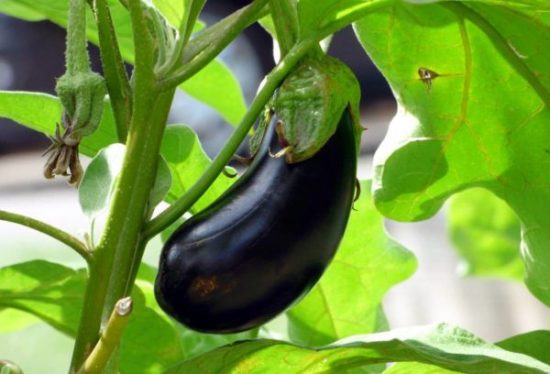
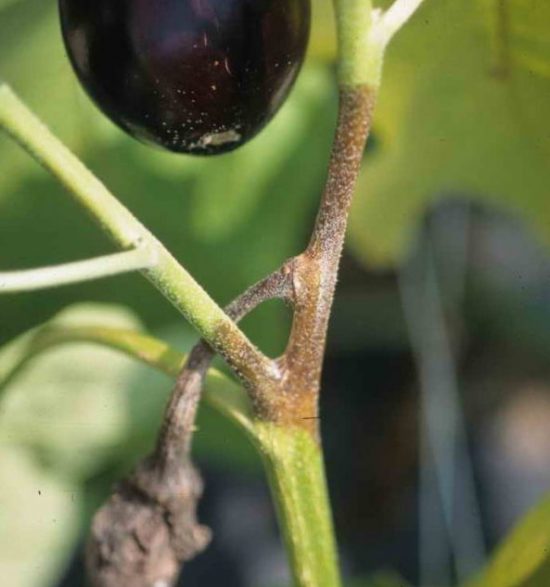
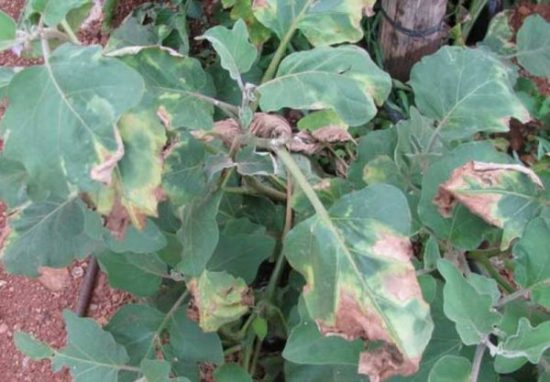
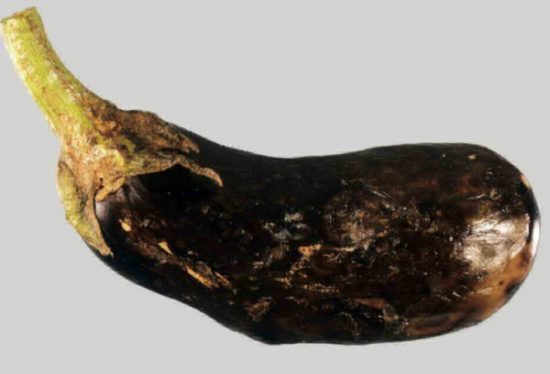
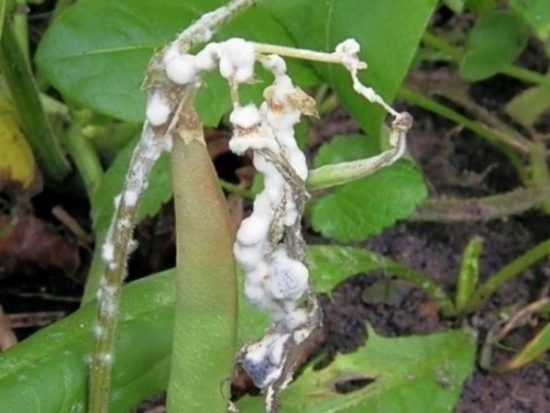
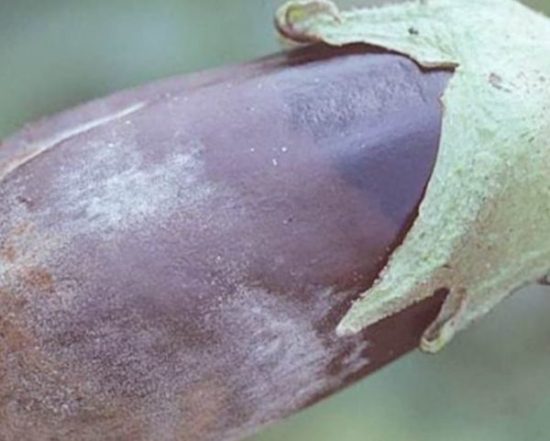
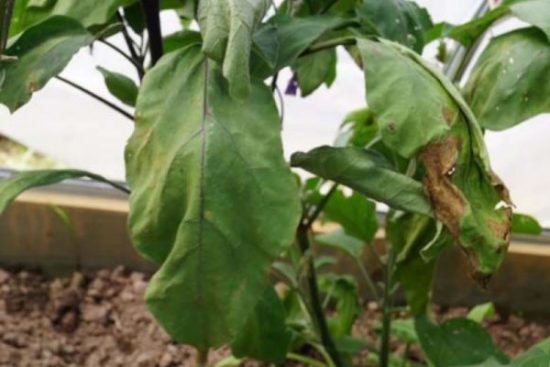
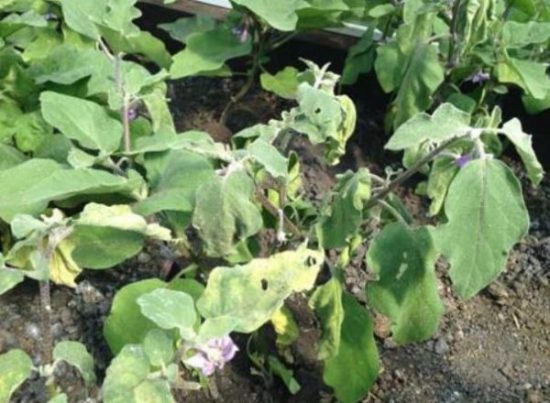
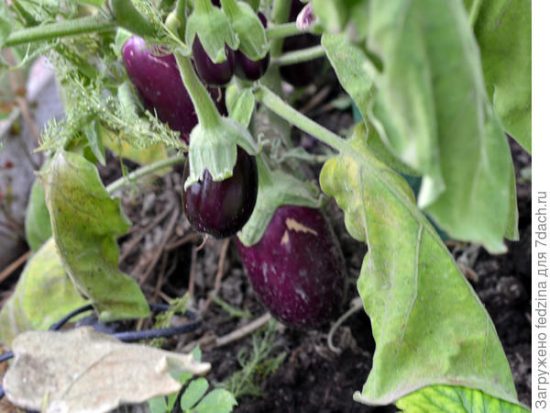
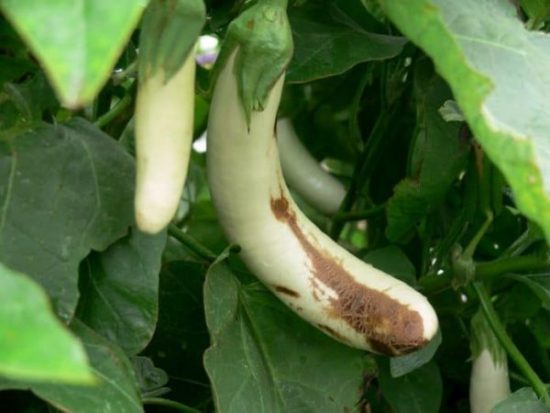
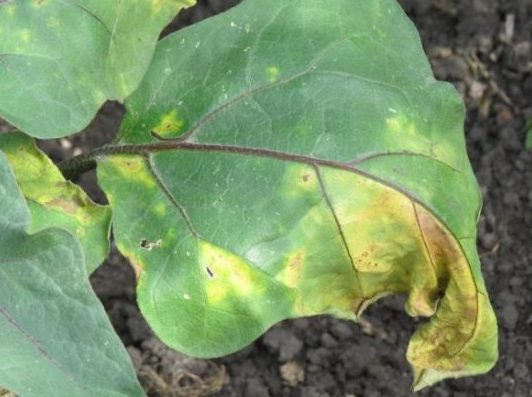
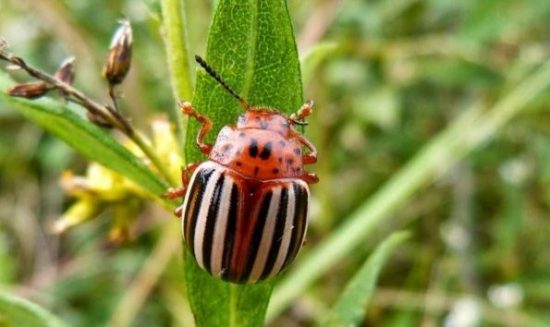
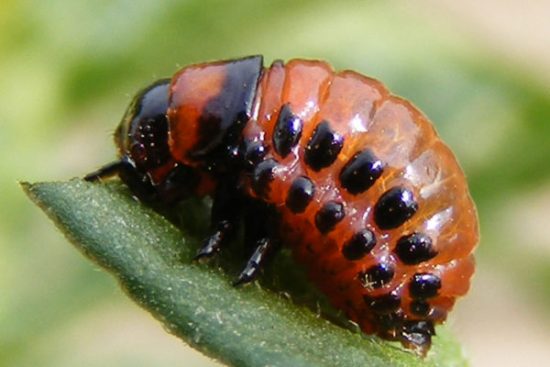

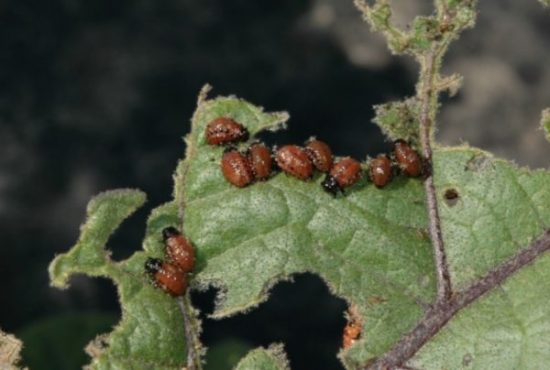
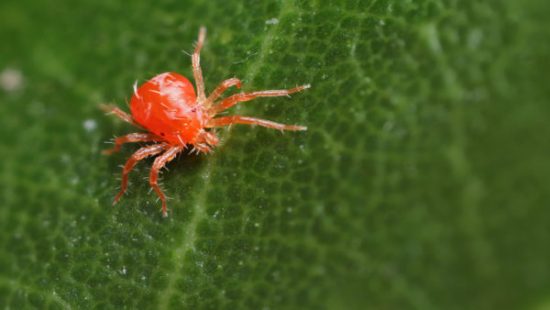
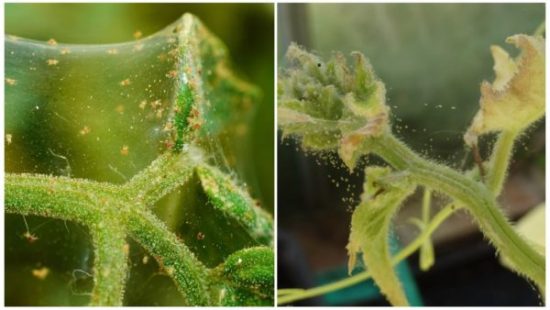



 CUCUMBERS NEVER GET SICK, I'VE BEEN USING ONLY THIS FOR 40 YEARS! I SHARE A SECRET WITH YOU, CUCUMBERS ARE LIKE THE PICTURE!
CUCUMBERS NEVER GET SICK, I'VE BEEN USING ONLY THIS FOR 40 YEARS! I SHARE A SECRET WITH YOU, CUCUMBERS ARE LIKE THE PICTURE! You can dig a bucket of potatoes from each bush. Do you think these are fairy tales? Watch the video
You can dig a bucket of potatoes from each bush. Do you think these are fairy tales? Watch the video
 How our fellow gardeners work in Korea. There is a lot to learn and just fun to watch.
How our fellow gardeners work in Korea. There is a lot to learn and just fun to watch. Eye trainer. The author claims that with daily viewing, vision is restored. They don't charge money for views.
Eye trainer. The author claims that with daily viewing, vision is restored. They don't charge money for views. A 3-ingredient cake recipe in 30 minutes is better than Napoleon. Simple and very tasty.
A 3-ingredient cake recipe in 30 minutes is better than Napoleon. Simple and very tasty. Therapeutic exercises for cervical osteochondrosis. A complete set of exercises.
Therapeutic exercises for cervical osteochondrosis. A complete set of exercises. Which indoor plants match your zodiac sign?
Which indoor plants match your zodiac sign? What about them? Excursion to German dachas.
What about them? Excursion to German dachas.